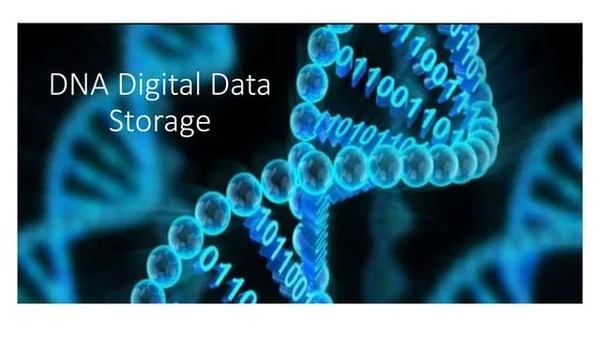
Data Centers and the Planet: Making Cloud Computing Eco-Friendly.
As cloud computing becomes the backbone of modern life, the environmental impact of data centers is growing rapidly. From massive energy and water consumption to e-waste and carbon emissions, the “invisible” cloud has a tangible ecological footprint. This article explores how innovation, renewable energy, and sustainable practices are transforming data centers into eco-friendly pillars of the digital age.
✨ Raghav Jain

The Hidden Environmental Cost of Cloud Computing
In the age of digital dominance, data is often called the “new oil.” From streaming movies to managing businesses, storing photos, or running artificial intelligence, data fuels our modern lives. But unlike oil, data is invisible—floating seamlessly through the cloud. What many fail to realize, however, is that this “cloud” has a physical form: data centers—vast facilities filled with servers that process, store, and transmit digital information around the clock. These centers, though critical to our digital economy, have a significant environmental footprint that is fast becoming one of the world’s most pressing sustainability challenges.
Globally, data centers consume roughly 1–2% of total electricity—a figure that’s steadily increasing as cloud computing, artificial intelligence, and the Internet of Things (IoT) expand. Some projections suggest this could reach 8% by 2030 if unchecked. To understand this impact, consider that a large data center can use as much energy as a small city. And since most electricity is still generated from fossil fuels, this translates into millions of tons of carbon emissions every year.
Energy is the most obvious concern. Servers must operate continuously, meaning downtime is unacceptable. Yet the true energy drain doesn’t just come from computing—it’s also from cooling systems. Servers generate immense heat, and if not controlled, temperatures can damage equipment. Traditional air conditioning and liquid cooling systems consume almost half of a data center’s total energy, making them both costly and environmentally taxing.
Water usage compounds the problem. Many cooling systems rely on evaporative methods, where water absorbs heat and evaporates. According to recent estimates, a typical data center can use millions of gallons of water per day, comparable to a small town’s consumption. As climate change intensifies global water scarcity, this becomes an ethical and operational concern.
Land and resource consumption are other key issues. Constructing and maintaining data centers require large plots of land, often disrupting local ecosystems. Moreover, the servers themselves rely on rare earth metals and other non-renewable materials, the mining of which has its own environmental toll. Then there’s e-waste—as technology evolves, outdated hardware is frequently discarded, creating toxic waste that’s difficult to recycle safely.
Perhaps the most paradoxical aspect of this digital dilemma is perception. To the average user, the “cloud” feels intangible, weightless, and clean—far removed from smokestacks or oil spills. Yet, every click, stream, or upload adds to a chain reaction of power demands stretching across continents. In short, while cloud computing reduces the need for local servers and paper documents, its collective impact on the planet is far from negligible.
However, this awareness has also sparked innovation. Companies like Google, Microsoft, Amazon, and Meta—some of the largest cloud providers—are now under intense scrutiny from regulators, investors, and eco-conscious consumers. In response, they have launched ambitious green initiatives aimed at transforming how data centers operate. From renewable energy integration to AI-driven cooling and circular hardware design, the race is on to build the next generation of eco-friendly cloud infrastructure.
Building a Greener Cloud: Innovations and Strategies
The journey toward sustainable cloud computing is not a single leap but a series of technological, operational, and philosophical shifts. The industry is realizing that environmental responsibility and business efficiency are not mutually exclusive—green data centers can be both profitable and planet-friendly.
One of the most significant transformations is the shift toward renewable energy. Tech giants are investing heavily in solar, wind, and hydroelectric power to offset or eliminate fossil fuel dependence. Google achieved carbon neutrality back in 2007 and has pledged to run entirely on carbon-free energy by 2030. Microsoft aims to be carbon negative—meaning it will remove more carbon than it emits—within the same decade. Amazon Web Services (AWS), the largest cloud provider, has committed to 100% renewable energy by 2025.
These pledges are more than public relations moves. Data centers are strategically located near renewable energy sources—such as wind farms in Texas or hydro-powered regions in Scandinavia—to minimize carbon footprints. Some facilities even run on direct renewable power, bypassing traditional grids to ensure continuous green energy supply.
Energy efficiency is another critical area of innovation. Artificial intelligence is now being used to monitor and optimize cooling and power distribution. For example, Google uses DeepMind AI to analyze temperature and workload data in real time, automatically adjusting cooling systems. This has led to energy savings of up to 40% in some centers. Similarly, “liquid cooling” techniques—where non-conductive liquids directly absorb heat from processors—are replacing traditional air conditioning, reducing both electricity use and noise pollution.
Server virtualization and workload optimization also help maximize performance with fewer physical machines. By allowing multiple virtual servers to run on a single piece of hardware, companies can drastically reduce hardware requirements, thus cutting energy and space needs. Additionally, modular data centers—smaller, scalable facilities—allow for more flexible and efficient deployment in locations optimized for climate and energy availability.
But green innovation isn’t limited to power consumption. Water conservation is becoming a priority as well. Some modern data centers employ “dry cooling” or closed-loop systems that recycle water instead of evaporating it. Microsoft’s experimental data center off the coast of Scotland, submerged under the ocean, took this concept even further—using seawater as a natural coolant while operating on renewable energy.
Meanwhile, circular economy principles are redefining hardware lifecycles. Companies are designing servers that can be easily disassembled, repaired, and recycled, extending their lifespan and minimizing e-waste. Old equipment is refurbished or resold, and materials like aluminum and copper are reclaimed for reuse.
Governments and environmental organizations are also stepping in with green data regulations and certifications. Standards such as the LEED (Leadership in Energy and Environmental Design) certification or the EU Code of Conduct for Data Centres encourage companies to adopt sustainable building and operational practices. Tax incentives and grants are further motivating companies to go green.
The rise of edge computing may also play a pivotal role in reducing data center strain. Instead of routing all data through massive centralized hubs, edge computing processes data closer to where it’s generated—reducing latency, bandwidth use, and overall power consumption. This decentralized model could make the digital ecosystem more energy-efficient and resilient.
Still, challenges remain. Renewable energy availability fluctuates, especially in regions with inconsistent sunlight or wind. Data center demand is growing faster than efficiency improvements in some areas. And while large corporations can afford to invest in sustainability, smaller providers may struggle with the cost of transitioning to green infrastructure.
Nevertheless, the progress so far paints a promising picture. The push toward sustainability isn’t just about reducing carbon emissions—it’s about redefining digital responsibility. As consumers, we too play a role. Choosing eco-conscious service providers, reducing unnecessary data storage, and supporting sustainable technology can collectively reduce the cloud’s environmental toll.
Ultimately, the future of data centers—and by extension, cloud computing—depends on harmonizing technological advancement with ecological stewardship. The next decade will determine whether humanity can truly create a “green cloud”—one that empowers innovation without burdening the planet.
In the modern digital era, the term “cloud computing” evokes images of seamless connectivity and limitless virtual storage floating somewhere above us, detached from physical reality. Yet, the truth is far more grounded—and alarming. Every photo uploaded, every video streamed, and every message sent depends on an enormous network of data centers, the invisible engines that power our digital lives. These facilities, housing tens of thousands of servers, operate 24/7 to process and store data, but this convenience comes at a steep environmental cost. Data centers currently account for about 1–2% of global electricity consumption, a number expected to rise sharply with the exponential growth of artificial intelligence, streaming platforms, and the Internet of Things (IoT). Each server requires a constant supply of electricity to stay online, and just as critically, a continuous flow of cooling to prevent overheating. Traditional cooling systems, often powered by electricity and water, consume nearly half the energy used in a data center, making them one of the largest contributors to carbon emissions in the technology sector. A single large data center can consume the same amount of electricity as a city of 100,000 people, while the industry as a whole releases hundreds of millions of tons of CO₂ into the atmosphere annually. Moreover, water usage adds another layer of ecological strain. Many facilities rely on evaporative cooling systems that use millions of gallons of water per day—roughly the same as a small town—raising concerns about sustainability in drought-prone regions. Adding to this are the land requirements and material consumption. Constructing and maintaining these massive structures demands vast plots of land and significant quantities of concrete, steel, and rare earth elements used in server components. When these servers become obsolete, they contribute to mountains of e-waste, much of which contains hazardous materials like lead and mercury. Ironically, the very technology designed to increase efficiency and reduce physical waste is, behind the scenes, creating an entirely new kind of environmental challenge. However, awareness of this “digital pollution” has triggered a wave of innovation and commitment across the technology industry. Companies such as Google, Microsoft, Amazon, and Meta—the primary architects of the cloud—are taking bold steps to minimize their carbon footprints and set new standards for green computing. One of the most transformative strategies is the shift toward renewable energy sources. Instead of relying on fossil fuels, these companies are investing heavily in wind, solar, and hydroelectric power to run their data centers. Google, for instance, has been carbon neutral since 2007 and aims to operate entirely on carbon-free energy by 2030, while Microsoft plans to become carbon negative within the same timeframe. Amazon Web Services (AWS) has pledged to power all operations with renewable energy by 2025. These goals are not just aspirational; many new data centers are now strategically built in regions with abundant renewable resources, such as the Nordic countries, where hydropower and natural cooling from cold climates provide a sustainable advantage. At the same time, cutting-edge AI technology is being deployed to improve energy efficiency. Google’s DeepMind AI, for example, monitors data center operations in real time, adjusting cooling and power distribution to reduce waste. This AI-driven optimization has cut energy consumption by up to 40% in some facilities. Meanwhile, innovations in liquid cooling systems, which circulate non-conductive liquids directly around processors, are replacing traditional air conditioning systems, dramatically lowering both power use and noise pollution. The concept of server virtualization—allowing multiple virtual machines to operate on a single physical server—further reduces the need for hardware and decreases energy demand. Beyond energy efficiency, water conservation has also become a priority. New “dry cooling” and closed-loop water systems recycle water instead of evaporating it, and some companies are even experimenting with ocean-based data centers cooled naturally by seawater. Microsoft’s underwater data center prototype off the coast of Scotland demonstrated that such innovations can operate efficiently and reliably while using zero freshwater resources. Another significant advancement lies in the adoption of circular economy principles. Instead of discarding old hardware, companies are extending product lifecycles by refurbishing, reusing, and recycling server components. Metals such as aluminum, copper, and gold are recovered, while modular design allows for easier repair and part replacement. This approach not only minimizes waste but also reduces the demand for raw materials, which are often mined at great environmental cost. Governments and regulatory bodies have begun to support these efforts through green certifications and sustainability incentives. Programs such as LEED (Leadership in Energy and Environmental Design) and the EU Code of Conduct for Data Centres encourage sustainable practices through guidelines and recognition. In addition, many countries now offer tax breaks and funding for organizations adopting renewable energy or energy-efficient technologies. A rising trend that could redefine cloud computing’s sustainability is edge computing, which processes data closer to its source rather than sending it to centralized data centers. This decentralization reduces latency and bandwidth usage while lowering the overall energy load on large facilities. With smart cities, autonomous vehicles, and IoT devices generating massive data volumes, edge computing offers a scalable and eco-friendly alternative that complements the global sustainability agenda. Yet, despite these impressive strides, significant challenges remain. Renewable energy availability fluctuates depending on location and weather, meaning some data centers still depend on non-renewable backup power. Moreover, the demand for digital services continues to outpace efficiency gains, creating a moving target for sustainability goals. Smaller data center operators also face financial and technical barriers to implementing green technologies on par with global giants. Nonetheless, the overall direction of progress is encouraging. The technology industry is shifting from being a major carbon emitter to becoming a key innovator in the fight against climate change. Consumers, too, have a vital role to play—by choosing eco-conscious cloud providers, deleting unnecessary files, and being mindful of their digital consumption habits, they can collectively drive demand for greener solutions. The future of cloud computing lies not in abandoning progress, but in harmonizing digital growth with environmental responsibility. If current trends continue, the next generation of data centers will be not only smarter and faster but also cleaner and more sustainable, paving the way for a truly green digital revolution that benefits both humanity and the planet.
In today’s increasingly digital world, cloud computing has become the backbone of almost every aspect of modern life, powering everything from social media platforms and streaming services to critical business operations and artificial intelligence applications, yet while the convenience of the cloud is undeniable, the environmental costs hidden behind this virtual infrastructure are enormous and often overlooked, because for every file uploaded, every video streamed, or every online transaction processed, data travels to massive data centers—vast facilities filled with thousands or even hundreds of thousands of servers operating 24/7, which consume staggering amounts of electricity not only to perform computations but also to maintain optimal operating temperatures through sophisticated cooling systems, and the energy demands of these centers are increasing rapidly, with global data centers estimated to consume 1–2% of total electricity worldwide, a figure that could rise dramatically in the next decade as the use of cloud services, IoT devices, and AI technologies expands, making them a significant contributor to carbon emissions, especially because a large portion of the electricity used still comes from fossil fuel sources; in addition to energy consumption, water use is another serious environmental concern, as many data centers rely on evaporative cooling or water-intensive chillers that can use millions of gallons of water per day, raising questions about sustainability in regions already experiencing water scarcity, while the construction and maintenance of these facilities also require significant land use, potentially disrupting local ecosystems, and the production and disposal of servers involve rare earth metals and other non-renewable materials, resulting in e-waste that is often difficult to recycle safely; recognizing these challenges, major technology companies such as Google, Microsoft, Amazon, and Meta have begun to implement large-scale initiatives to reduce the environmental footprint of their data centers, including transitioning to renewable energy sources like wind, solar, and hydroelectric power, strategically locating new facilities near clean energy resources, and setting ambitious targets to achieve carbon neutrality or even carbon negativity within the next decade, with Google already carbon neutral since 2007 and aiming for fully carbon-free operations by 2030, Microsoft committing to be carbon negative by the same year, and AWS planning to achieve 100% renewable energy use by 2025; alongside renewable energy adoption, improving energy efficiency within the data centers themselves has become a priority, with artificial intelligence and machine learning being deployed to optimize server loads, cooling patterns, and energy distribution in real time, reducing energy waste by up to 40%, while innovative cooling technologies such as liquid cooling, immersion cooling, and the use of natural or seawater as cooling sources are dramatically decreasing reliance on traditional air conditioning systems and fresh water, with projects like Microsoft’s submerged underwater data center in Scotland demonstrating the potential for zero freshwater cooling while maintaining operational efficiency; server virtualization and workload optimization further contribute to sustainability, as multiple virtual machines can operate on a single physical server, reducing the total number of servers required, thereby lowering energy, material, and land use, while modular and scalable data center designs allow for deployment in locations optimized for climate, energy availability, and environmental impact, enhancing overall efficiency; additionally, the circular economy is being applied to hardware lifecycles, with servers designed for easier disassembly, repair, and refurbishment, allowing components like aluminum, copper, and other valuable materials to be reused or recycled, thus minimizing e-waste and reducing the need for environmentally damaging mining activities, while government regulations, green certifications such as LEED, and tax incentives are further motivating companies to adopt sustainable practices, ensuring that environmental accountability becomes an integral part of cloud operations; edge computing also offers a promising path to sustainability, as it processes data closer to its source, reducing the energy-intensive transmission of information to central data centers, decreasing latency, and improving efficiency across networks, particularly as the number of connected devices grows exponentially; yet despite these advancements, challenges remain, including fluctuations in renewable energy availability, the continuously increasing demand for digital services, and the financial and technical barriers faced by smaller providers seeking to implement green technologies, highlighting that while the journey toward a fully eco-friendly cloud is well underway, it requires coordinated efforts from industry leaders, regulators, and end users; individuals can also contribute by making conscious choices, such as selecting cloud providers committed to renewable energy, limiting unnecessary data storage, and reducing excessive streaming or downloading, collectively reducing the overall environmental burden of digital activity; ultimately, the future of cloud computing and data centers lies in achieving a harmonious balance between technological innovation and environmental stewardship, demonstrating that it is possible to maintain digital growth and connectivity while significantly reducing carbon emissions, conserving natural resources, and minimizing e-waste, with the vision of a sustainable, carbon-neutral “green cloud” serving as both an achievable goal and a blueprint for responsible technological development, ensuring that the infrastructure supporting our digital lives does not come at the expense of the planet, and instead contributes to a cleaner, more sustainable future where innovation and ecological responsibility coexist in a mutually reinforcing cycle.
Conclusion
Data centers are the beating heart of the digital age, but they come with a heavy environmental cost—massive electricity consumption, water use, and e-waste generation. However, the industry is evolving rapidly. From renewable energy integration and AI-powered efficiency to circular hardware design and edge computing, tech leaders are reinventing cloud infrastructure to align with global sustainability goals.
The path to eco-friendly cloud computing is both challenging and inspiring. It reflects a broader truth: that the same ingenuity driving technological progress can also safeguard the planet. If this momentum continues, the digital revolution could soon transform from an ecological burden into a cornerstone of environmental responsibility—proving that innovation and sustainability can indeed coexist harmoniously.
Q&A Section
Q1: Why are data centers considered environmentally harmful?
Ans: Data centers consume massive amounts of electricity and water to power and cool their servers. Since much of this energy comes from fossil fuels, they contribute significantly to carbon emissions and global warming.
Q2: How much energy do global data centers use?
Ans: Estimates suggest data centers consume between 1–2% of global electricity, with projections that this could rise to 8% by 2030 if no sustainability measures are implemented.
Q3: What are tech companies doing to make data centers eco-friendly?
Ans: Major companies like Google, Microsoft, and Amazon are investing in renewable energy, AI-driven cooling systems, water recycling, and circular economy principles to minimize their environmental impact.
Q4: What role does artificial intelligence play in green data centers?
Ans: AI optimizes energy usage by analyzing server loads and temperature in real time, automatically adjusting cooling systems to reduce energy waste—resulting in savings of up to 40%.
Q5: What is edge computing, and how does it help the environment?
Ans: Edge computing processes data closer to its source instead of routing it through distant data centers. This reduces power consumption, network strain, and latency, making digital operations more efficient and sustainable.
Similar Articles
Find more relatable content in similar Articles

Protecting Kids in the Digital..
In an increasingly connected w.. Read More

Wearable Health Sensors: The D..
Wearable health sensors are re.. Read More

Digital DNA: The Ethics of Gen..
Digital DNA—the digitization a.. Read More

Data Centers and the Planet: M..
As cloud computing becomes the.. Read More
Explore Other Categories
Explore many different categories of articles ranging from Gadgets to Security
Smart Devices, Gear & Innovations
Discover in-depth reviews, hands-on experiences, and expert insights on the newest gadgets—from smartphones to smartwatches, headphones, wearables, and everything in between. Stay ahead with the latest in tech gear
Apps That Power Your World
Explore essential mobile and desktop applications across all platforms. From productivity boosters to creative tools, we cover updates, recommendations, and how-tos to make your digital life easier and more efficient.
Tomorrow's Technology, Today's Insights
Dive into the world of emerging technologies, AI breakthroughs, space tech, robotics, and innovations shaping the future. Stay informed on what's next in the evolution of science and technology.
Protecting You in a Digital Age
Learn how to secure your data, protect your privacy, and understand the latest in online threats. We break down complex cybersecurity topics into practical advice for everyday users and professionals alike.
© 2025 Copyrights by rTechnology. All Rights Reserved.